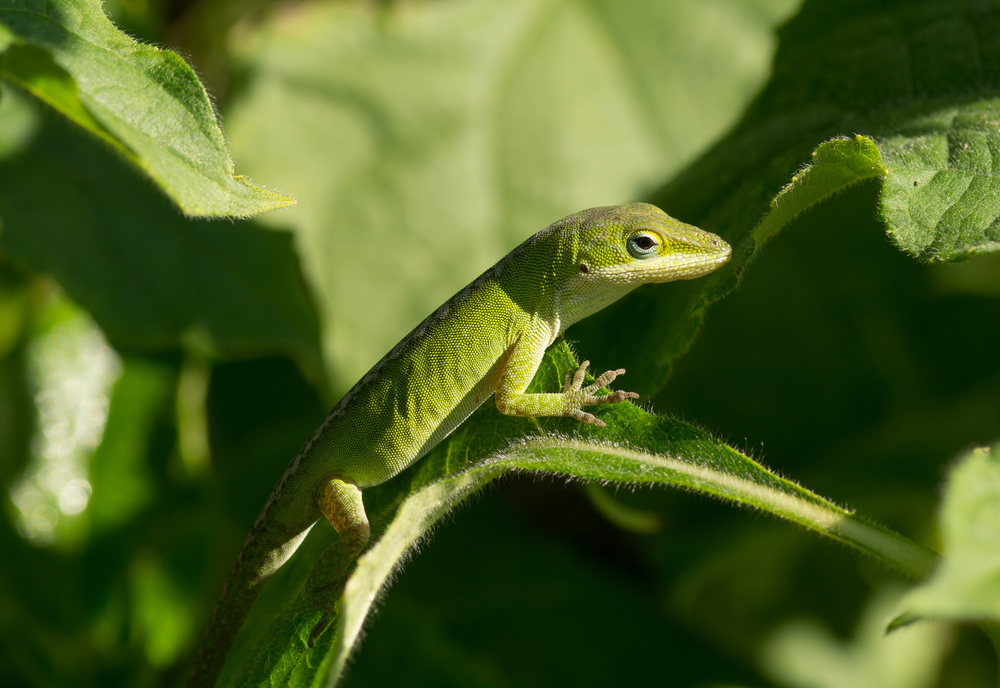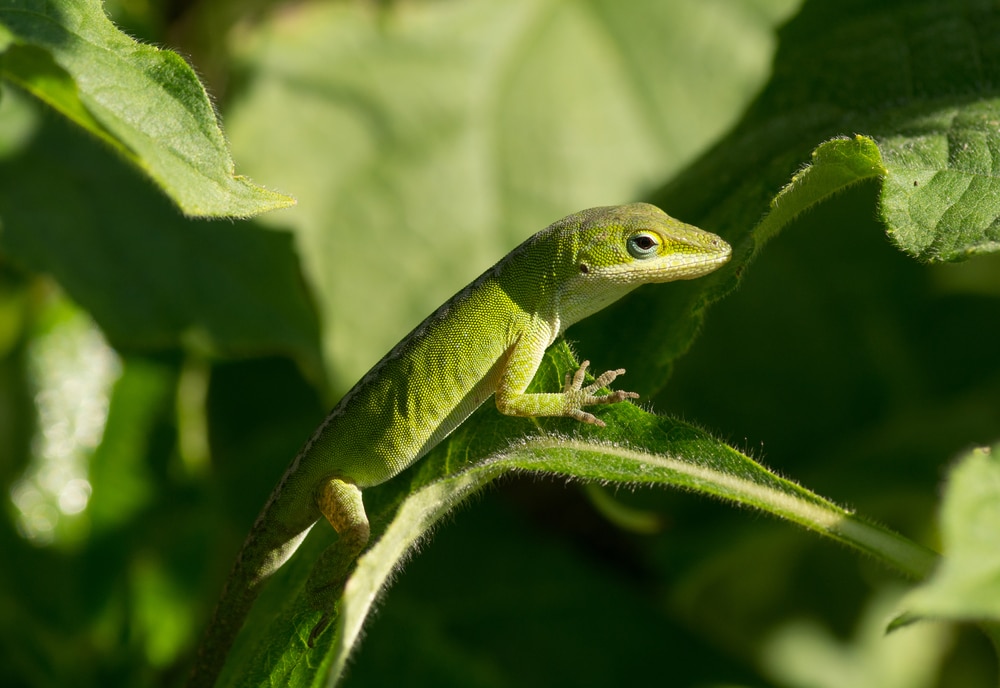How do you take care of an anole lizard?
Q. My husband just brought home an anole lizard, and we don’t know too much about it. Can you help us?
A. Anole lizards are good beginner lizards, so it sounds as if you can enter the wonderful world of reptilekeeping with an excellent choice of a new pet. That said, it is always best if a family researches a new pet before acquiring it and has the proper habitat already set up for the new arrival.
Chastising aside, I realize that sometimes people make impulse purchases. In other cases, a lizard might somehow wander into a person’s life. In that case, it might be necessary to quickly put together a suitable habitat.
A good cage would be an enclosure measuring 2 feet by 2 feet by 2 feet, but the largest you can provide is always best. A glass aquarium works well, and you can use a screen top or a mesh enclosure with it. On the bottom, use either calcium sand or a layer of peat moss over coarse gravel. The gravel should be too large to easily swallow. Anoles like climbing on and hiding in live plants, so add some rocks and branches for these purposes.
Some anoles may learn to drink from a shallow dish, but it is better to mist the plants twice a day to allow the lizards to drink the collected water. Using a drip system similar to one used for true chameleons also works.
During the day the temperature should range between 77 and 86 degrees Fahrenheit, and at night the temperature should range from 65 to 74 degrees. A heat bulb and a full-spectrum fluorescent light bulb that emits UVB are required. You should have at least two accurate thermometers/hygrometers to measure the temperature and humidity in the enclosure.
The diet should be composed of live insects of appropriate size. Anoles relish crickets (gut loaded), mealworms, waxworms, butterworms, flies, spiders and small crawly things found around the house. They almost never eat dead or immobile things, so make sure you tempt your new lizard with live insects.
It is possible for anoles to drop their tails if frightened or threatened, so never pick up your new lizard by the tail. You can tame it and begin holding it if it doesn’t resist too much. Some seem to enjoy the warmth of human hands, yet others are too scared to ever be held comfortably. Most anoles are better off viewed through the habitat sides and not handled at all — except when necessary to clean the cage.
Always treat herps as if they carry dangerous bacteria. To avoid contamination, wash your hands thoroughly after handling a herp, and never clean the cage or cage equipment in your kitchen.
It might be a good idea to have a qualified herp vet examine your new pet, or at least bring in a fecal sample for testing. You didn’t say if your anole was caught from the wild or if it is a captive-bred creature. Wild caughts may carry intestinal parasites, but so can domestically bred anoles. Most are from wild-caught parents.
I hope this helps. Good luck with your new lizard. Anoles are really wonderful pets!

shutterstock/gerald a. deboer
Anoles make great beginner lizard pets.
Need a Herp Vet?
If you are looking for a herp-knowledgeable veterinarian in your area, a good place to start is by checking the list of members on the Association of Reptilian and Amphibian Veterinarian (ARAV) web site at www.arav.com. Look for DVMs who appear to maintain actual veterinary offices that you could contact.


